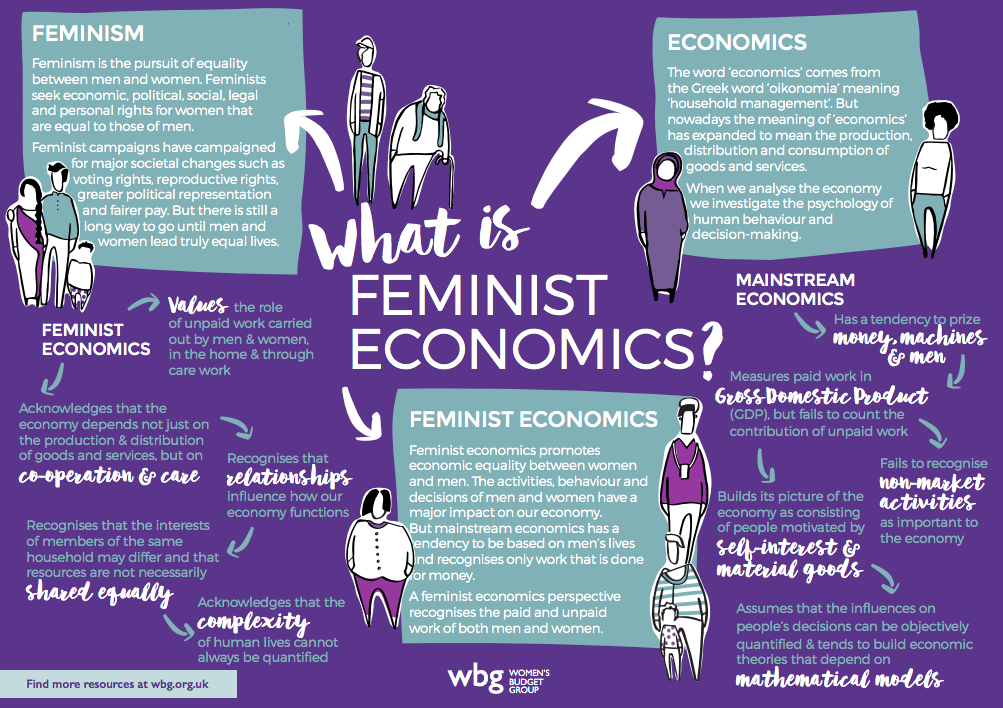by Aditi Singhal
Introduction
The way the Gross Domestic Product (GDP) of any country is measured is full of defects. Growth in most nations is measured in terms of GDP and it becomes a real problem if most of the work one does, is not accounted for in the calculation of GDP for several reasons like political economic theory or gendered value system that has been created in the society. The failure to recognise the work of women who carry out household work into the accounts for the calculation of GDP is a huge drawback of this system of measuring the production in an economy. This gives us a sense about the gender biases present in our method of economic analysis. Apart from this problem of gender-biasness, another fault in this method is the fact that the economists only include manufactured capital into accounts while calculating GDP. Financial markets and the trading activities are not included in this ambit.
GDP and its Measurement
“Gross domestic product (GDP) is a measure of the income and expenditures of an economy. In simpler terms, it is the total market value of all final goods and services produced within a country in a given period of time.”
The higher the value of GDP, the more the economy is considered to be progressing and improving. A higher GDP suggests the well-being of an economy. For instance, the GDP of India has been increasing over the years and it has been interpreted by various economists to suggest that the country is growing and developing. The growth rate in the last five years has expanded from 5.081 in 2012 to in 7.2 2017. However, what about the increasing poverty, dissatisfaction of the people with the government (if any), increase in the number of rape and assault cases, and increasing crime rate? The negative impact of all this on the people of the society is something which this measure of well-being of the economy fails to project. Further, as stated before, the work done by women to maintain and improve the household is also not included in the count of well-being through this method. All of this causes the GDP to not give an actual picture of the well-being of an economy.
Household Work Done by Women
It is a well-known fact that a lot of people indulge in volunteering work and unpaid work at home. Though it is the people belonging to both the genders that indulge in activities like these, it is mostly women who indulge in this household work which remains unpaid and unaccounted for till date. ‘As per a survey conducted, on an average, women are indulged in twice as much work as men in OECD countries’. Since it remains unaccounted for, this section of the population and their needs get overlooked by the economic policy makers of the nation.
However, it is a highly important section of the society which needs to be taken into consideration while we’re calculating the general level of well-being in the economy. Especially in the context of India, where it is believed that it is the duty of a woman to take care of the household and manage all her other work (if any). A wife is brought into the house with a view that she would take care of the husband, the house, his family and his kids in future. All the time and energy she spends in doing the work for which she doesn’t get paid for, doesn’t get counted when calculating the general well-being of the society.
There are still families and communities which exist today who believe that it is not the work of women to step outside the house and earn an income. It is considered non-masculine for the husband if the wife goes out to earn money during his lifetime. It’s his duty and he should accomplish it himself. There are other societies where even though the woman wants to work, she is not allowed to do so because her marital family does not want her to do so. In some families, she is considered to be a bad woman, wife and mother if she works after she bears a child because her inherent duty now is to take care of the child and look after his needs and education instead of living her life the way she wants to. In all such situations, the role of the woman is reduced to that of a woman doing household chores which lead to her energy, inputs and time going to waste in terms of recognition and not being accounted into the measure of total well-being, whether positive or negative, of the society. Also, the mental torture she goes through, remains unaccounted for when it comes to the aspect of well-being.
In rural areas, women spend hours going to far off places to collect water and firewood for their daily needs. All the time they spend doing this work, can be utilised by them to do some other kind of work which they get paid for. This is the concept of ‘opportunity cost’. These women are making a choice to do this work at the cost of some other work through which they might make a living. In the latter, their earnings would also contribute to the GDP. However, the concept of not including the same amount of work they’re doing in their own houses makes no sense to the common (feminist) mind.
Further, another way to look at it would be the ‘replacement cost’ method. If the work being done by this woman was done by somebody else because she was also working and earning money, that person would have to be paid a certain sum of money for carrying out this work. In such a situation, why should the work done by a housewife or any female working in her own house not be counted for the calculation of GDP when the same work done by somebody else would be accounted for? For instance, when you hire a house help to do those same tasks through an agency, you pay them money and that is counted towards the calculation of GDP and development. Yet, when the woman does it herself, the work gets neglected and unaccounted for. This gives us a clear sense of the bias which is associated with the household work done by any female in her house.
“By not recognizing the economic value of women’s household production services, the value of non-market (unpaid) household labour is excluded from both sides of national income and product accounts.”
Alternative Methods Should Be Used
It is understandable that the tabulation, tracking and calculation of such work into the GDP calculation can be very difficult. Development is a very difficult thing to measure. It is difficult to measure the development of a single human being, physically, socially and intellectually. So, imagine doing that for many people forming the national population. But including and calculating what is already included is not easy as well. There are many difficulties in calculating what the government already does, but the government and statistical organisations somehow manage to do it.
Further, if calculating it in terms of GDP is difficult, then the government can make use of the other indicators of well-being which are out there in the economy and are being used by few nations across the world. They might be able to serve the purpose of giving us a clear picture which the measure of GDP is not able to. One of the solutions to the main problem of unaccounted work done by women could be the inclusion of such household work in the calculation of GDP and the same has been exemplified and discussed by a lot of feminist economists, like Amartaya Sen who has worked on how to do that. He discusses how to get reproductive labour counted as part of GDP. Governments can always use measures like the Better Life Index and the Genuine Progress Indicator, which take aspects like these into account, to know the status of the actual well-being of the people of the society.
Conclusion
To conclude, I would like to point out as to how behind all this growth and prosperity, as projected by the measure of GDP, there lies a harsh reality of dissatisfaction, poverty and unrest within the society. “As a rough guide to long run increment in prosperity, GDP growth has been a reasonable yardstick; but it is only a proxy for economic welfare. There is no good rationale for continuing to ignore other important components of economic well-being, including women’s unpaid work.” The measure of GDP fails to take many things into account which results in the preparation of very amazing and flamboyant statistics for the rest of the world to see and analyse. However, these stats are not a true depiction of the society and cannot be relied upon to reach any conclusion as they lack a lot of details and hence give us a fallacious image of the society.
References
- Coyle D, ‘The Way We Measure Economies Is Inherently Sexist’ (World Economic Forum, 2016) https://www.weforum.org/agenda/2016/04/why-economic-policy-overlooks-women/ accessed 9 April 2017.
- Goodwin N and others, Microeconomics in Context (2nd edn, Routledge 2008)
- ‘Review of if Women Counted: A New Feminist Economics’ (1992) 2 Review of Income and Wealth http://www.roiw.org/1992/237.pdf accessed 9 April 2017.
Aditi Singhal, the author, is a third year law student at Jindal Global Law School.
Featured image source: AliceSachrajda


